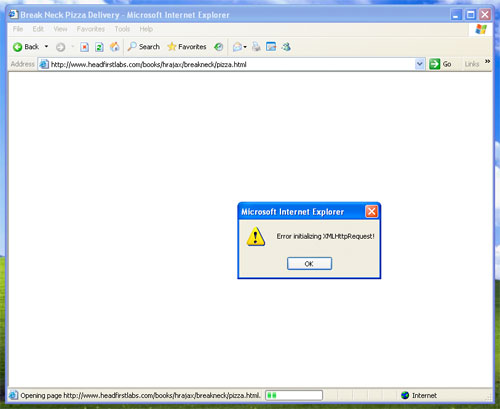我总是会搞混这些东西,还是写下来帮助记忆。
Finalize
即Object.Finalize(),C#中不允许使用Finalize,析构器就等价于Finalize。
Destructor
析构器(Destructor)是在对象没有被引用的时候,由CLR自动调用的。
任何包含非托管资源的类都必须定义析构器来释放这些资源,因为它们并不会在对象消亡时自动释放,而托管资源就可以。
Dispose方法
Dispose方法是IDisposable接口的实现方法,Dispose方法并不会被自动调用。
这里还有Dispose(bool)方法的概念,由于类的使用者或许会忘记使用Dispose()方法,并且析构器有可能二次执行析构操作,所以设计Dispose(bool)重载方法来判断并释放托管资源。合理的设计思想是,在Dispose()中使用Dispose(true)来显式释放托管资源和非托管资源,而在析构器中使用Dispose(false),只释放非托管资源(CLR会去自动调用托管资源的析构器)。在Dispose()方法中应使用GC.GC.SuppressFinalize()方法来阻止CLR调用析构器。
至于Close()方法,只是一种习惯名称,一般直接调用Dispose()方法。
来看MSDN里精辟的例子。
// By implementing IDisposable, you are announcing that instances
// of this type allocate scarce resources.
public class BaseResource: IDisposable
{
// Pointer to an external unmanaged resource.
private IntPtr handle;
// Other managed resource this class uses.
private Component Components;
// Track whether Dispose has been called.
private bool disposed = false;
// Constructor for the BaseResource object.
public BaseResource()
{
// Insert appropriate constructor code here.
}
// Implement IDisposable.
// Do not make this method virtual.
// A derived class should not be able to override this method.
public void Dispose()
{
Dispose(true);
// Take yourself off the Finalization queue
// to prevent finalization code for this object
// from executing a second time.
GC.SuppressFinalize(this);
}
// Dispose(bool disposing) executes in two distinct scenarios.
// If disposing equals true, the method has been called directly
// or indirectly by a user's code. Managed and unmanaged resources
// can be disposed.
// If disposing equals false, the method has been called by the
// runtime from inside the finalizer and you should not reference
// other objects. Only unmanaged resources can be disposed.
protected virtual void Dispose(bool disposing)
{
// Check to see if Dispose has already been called.
if(!this.disposed)
{
// If disposing equals true, dispose all managed
// and unmanaged resources.
if(disposing)
{
// Dispose managed resources.
Components.Dispose();
}
// Release unmanaged resources. If disposing is false,
// only the following code is executed.
CloseHandle(handle);
handle = IntPtr.Zero;
// Note that this is not thread safe.
// Another thread could start disposing the object
// after the managed resources are disposed,
// but before the disposed flag is set to true.
// If thread safety is necessary, it must be
// implemented by the client.
}
disposed = true;
}
// Use C# destructor syntax for finalization code.
// This destructor will run only if the Dispose method
// does not get called.
// It gives your base class the opportunity to finalize.
// Do not provide destructors in types derived from this class.
~BaseResource()
{
// Do not re-create Dispose clean-up code here.
// Calling Dispose(false) is optimal in terms of
// readability and maintainability.
Dispose(false);
}
// Allow your Dispose method to be called multiple times,
// but throw an exception if the object has been disposed.
// Whenever you do something with this class,
// check to see if it has been disposed.
public void DoSomething()
{
if(this.disposed)
{
throw new ObjectDisposedException();
}
}
}
// Design pattern for a derived class.
// Note that this derived class inherently implements the
// IDisposable interface because it is implemented in the base class.
public class MyResourceWrapper: BaseResource
{
// A managed resource that you add in this derived class.
private ManagedResource addedManaged;
// A native unmanaged resource that you add in this derived class.
private NativeResource addedNative;
private bool disposed = false;
// Constructor for this object.
public MyResourceWrapper()
{
// Insert appropriate constructor code here.
}
protected override void Dispose(bool disposing)
{
if(!this.disposed)
{
try
{
if(disposing)
{
// Release the managed resources you added in
// this derived class here.
addedManaged.Dispose();
}
// Release the native unmanaged resources you added
// in this derived class here.
CloseHandle(addedNative);
this.disposed = true;
}
finally
{
// Call Dispose on your base class.
base.Dispose(disposing);
}
}
}
}
// This derived class does not have a Finalize method
// or a Dispose method without parameters because it inherits
// them from the base class.
有一个热传的对象复活(resurrection)的例子
{
public int Data;
public Resurrection(int data)
{
Data = data;
}
~Resurrection()
{
Main.Instance = this;
}
}
public class Main
{
public static Resurrection Instance;
public static void Main()
{
Instance = new Resurrection(1);
Instance = null;
GC.Collect();
GC.WaitForPendingFinalizers();
// 看到了吗,在这里“复活”了。
Console.WriteLine(Instance.Data);
Instance = null;
GC.Collect();
Console.ReadLine();
}
}
还有一个弱引用的例子,弱引用的对象在回收以前还是可以被重复使用的。
{
public int Data;
public Fat(int data)
{
Data = data;
}
}
public class MainClass
{
public static void Main()
{
Fat oFat = new Fat(1);
WeakReference oFatRef = new WeakReference(oFat);
// 从这里开始,Fat对象可以被回收了。
oFat = null;
if (oFatRef.IsAlive)
{
Console.WriteLine(((Fat) oFatRef.Target).Data);
}
GC.Collect();
Console.WriteLine(oFatRef.IsAlive); // False
Console.ReadLine();
}
}
参考:
http://msdn2.microsoft.com/zh-cn/library/fs2xkftw(VS.80).aspx
http://blog.csdn.net/sykpboy/archive/2005/04/11/342971.aspx











